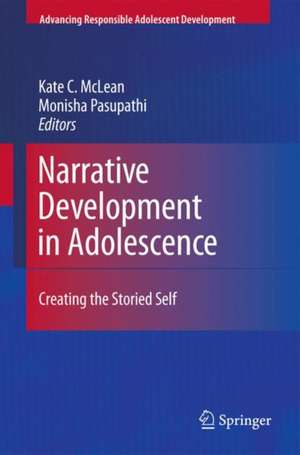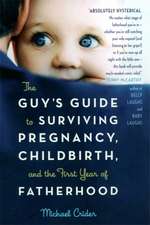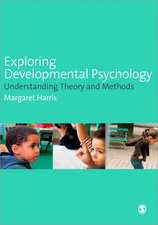Narrative Development in Adolescence: Creating the Storied Self: Advancing Responsible Adolescent Development
Editat de Kate C. McLean, Monisha Pasupathien Limba Engleză Hardback – dec 2009
| Toate formatele și edițiile | Preț | Express |
|---|---|---|
| Paperback (1) | 725.61 lei 6-8 săpt. | |
| Springer Us – 4 oct 2011 | 725.61 lei 6-8 săpt. | |
| Hardback (1) | 645.47 lei 6-8 săpt. | |
| Springer Us – dec 2009 | 645.47 lei 6-8 săpt. |
Din seria Advancing Responsible Adolescent Development
- 18%
 Preț: 948.61 lei
Preț: 948.61 lei - 20%
 Preț: 567.63 lei
Preț: 567.63 lei - 15%
 Preț: 641.71 lei
Preț: 641.71 lei - 24%
 Preț: 669.07 lei
Preț: 669.07 lei -
 Preț: 382.18 lei
Preț: 382.18 lei - 20%
 Preț: 552.45 lei
Preț: 552.45 lei - 5%
 Preț: 1024.80 lei
Preț: 1024.80 lei - 20%
 Preț: 547.91 lei
Preț: 547.91 lei -
 Preț: 389.49 lei
Preț: 389.49 lei - 18%
 Preț: 948.79 lei
Preț: 948.79 lei -
 Preț: 389.11 lei
Preț: 389.11 lei -
 Preț: 384.70 lei
Preț: 384.70 lei - 18%
 Preț: 995.17 lei
Preț: 995.17 lei - 15%
 Preț: 646.94 lei
Preț: 646.94 lei - 24%
 Preț: 804.58 lei
Preț: 804.58 lei - 15%
 Preț: 701.40 lei
Preț: 701.40 lei -
 Preț: 394.51 lei
Preț: 394.51 lei - 15%
 Preț: 646.30 lei
Preț: 646.30 lei -
 Preț: 391.99 lei
Preț: 391.99 lei - 15%
 Preț: 643.34 lei
Preț: 643.34 lei - 15%
 Preț: 664.29 lei
Preț: 664.29 lei -
 Preț: 395.63 lei
Preț: 395.63 lei -
 Preț: 395.63 lei
Preț: 395.63 lei -
 Preț: 382.75 lei
Preț: 382.75 lei - 18%
 Preț: 733.96 lei
Preț: 733.96 lei
Preț: 645.47 lei
Preț vechi: 759.37 lei
-15% Nou
Puncte Express: 968
Preț estimativ în valută:
123.52€ • 134.13$ • 103.76£
123.52€ • 134.13$ • 103.76£
Carte tipărită la comandă
Livrare economică 23 aprilie-07 mai
Preluare comenzi: 021 569.72.76
Specificații
ISBN-13: 9780387898247
ISBN-10: 0387898247
Pagini: 237
Ilustrații: XXXIII, 237 p. 14 illus.
Dimensiuni: 155 x 235 x 16 mm
Greutate: 0.56 kg
Ediția:2010
Editura: Springer Us
Colecția Springer
Seria Advancing Responsible Adolescent Development
Locul publicării:New York, NY, United States
ISBN-10: 0387898247
Pagini: 237
Ilustrații: XXXIII, 237 p. 14 illus.
Dimensiuni: 155 x 235 x 16 mm
Greutate: 0.56 kg
Ediția:2010
Editura: Springer Us
Colecția Springer
Seria Advancing Responsible Adolescent Development
Locul publicării:New York, NY, United States
Public țintă
Professional/practitionerCuprins
Self-Continuity Across Developmental Change in and of Repeated Life Narratives.- Emerging Identities: Narrative and Self from Early Childhood to Early Adolescence.- Patterns of Family Narrative Co-construction in Relation to Adolescent Identity and Well-Being.- Autonomy, Identity, and Narrative Construction with Parents and Friends.- What He Said to Me Stuck: Adolescents’ Narratives of Grandparents and Their Identity Development in Emerging Adulthood.- Life Stories of Troubled Youth: Meanings for a Mentor and a Scholarly Stranger.- Re-storying the Lives of At-Risk Youth: A Case Study Approach.- Constructing Resilience: Adolescent Motherhood and the Process of Self-Transformation.- Negotiating the Meanings of Adolescent Motherhood Through the Medium of Identity Collages.- How Violent Youth Offenders and Typically Developing Adolescents Construct Moral Agency in Narratives About Doing Harm.- Critical Narrating by Adolescents Growing Up in War: Case Study Across the Former Yugoslavia.
Recenzii
From the reviews:
“This book focuses on understanding the life stories of adolescents and the relationship to developmental maturity. … It is intended for researchers, clinicians, and graduate students in developmental, clinical, child, and school psychology as well as allied mental health and education fields. … great need to understand teenagers and help them as they grow into adulthood. … The international authorship gives readers a chance to understand youth from all over the world. Clinicians working with teenagers will find this of great help.” (Gary B. Kanuik, Doody’s Review Service, May, 2010)
“Narrative Development in Adolescence: Creating the Storied Self, edited by Kate McLean and Monisha Pasupathi, represents the emergence of a new field within the world of narrative psychology–adolescent narrative development. … It is an essential resource for researchers, clinicians and anyone conducting research or working with adolescents and who seek to ensure their healthy development and successful transition to adulthood.” (Prathiba Nagabhushan, Journal of Youth Adolescence, Vol. 40, 2011)
“This book focuses on understanding the life stories of adolescents and the relationship to developmental maturity. … It is intended for researchers, clinicians, and graduate students in developmental, clinical, child, and school psychology as well as allied mental health and education fields. … great need to understand teenagers and help them as they grow into adulthood. … The international authorship gives readers a chance to understand youth from all over the world. Clinicians working with teenagers will find this of great help.” (Gary B. Kanuik, Doody’s Review Service, May, 2010)
“Narrative Development in Adolescence: Creating the Storied Self, edited by Kate McLean and Monisha Pasupathi, represents the emergence of a new field within the world of narrative psychology–adolescent narrative development. … It is an essential resource for researchers, clinicians and anyone conducting research or working with adolescents and who seek to ensure their healthy development and successful transition to adulthood.” (Prathiba Nagabhushan, Journal of Youth Adolescence, Vol. 40, 2011)
Notă biografică
Kate C. McLean is an assistant professor in the Department of Psychology at the University of Toronto. She completed her Ph.D in Developmental Psychology at the University of California, Santa Cruz in 2004.
Monisha Pasupathi is an associate professor of developmental psychology in the Department of Psychology at the University of Utah. She completed her Ph.D. in Personality Psychology at Stanford University in 1997, and subsequently served as a post-doctoral researcher at the Max Planck Institute for Human Development in Berlin, Germany, until 1999.
Monisha Pasupathi is an associate professor of developmental psychology in the Department of Psychology at the University of Utah. She completed her Ph.D. in Personality Psychology at Stanford University in 1997, and subsequently served as a post-doctoral researcher at the Max Planck Institute for Human Development in Berlin, Germany, until 1999.
Textul de pe ultima copertă
The need to establish a narrative self reaches an important peak during adolescence as teens work to understand life events and establish their self-identity. The first book to examine narrative development during adolescence in depth, Narrative Development in Adolescence: Creating the Storied Self, focuses on both stable and at-risk youth as they construct, organize, and tell their life stories and link these stories to larger developmental contexts as they grow to maturity.
Renowned specialists identify such core skills as reflection, meaning making, and decision making as well as crucial domains, including autonomy and moral agency evolving across normative adolescence, and relate them to the narrative process. Deficits in these key areas are seen in the more contradictory and incoherent stories narrated by delinquent youth, teenage mothers, and victims of war and violence. In addition, these themes are observed as adolescents process and interpret the narratives of others.
This volume offers insights into the crucial task of identity development, and explores new possibilities for counseling and therapy. Its authoritative and accessible coverage:
Renowned specialists identify such core skills as reflection, meaning making, and decision making as well as crucial domains, including autonomy and moral agency evolving across normative adolescence, and relate them to the narrative process. Deficits in these key areas are seen in the more contradictory and incoherent stories narrated by delinquent youth, teenage mothers, and victims of war and violence. In addition, these themes are observed as adolescents process and interpret the narratives of others.
This volume offers insights into the crucial task of identity development, and explores new possibilities for counseling and therapy. Its authoritative and accessible coverage:
- Examines the relationships between narrative and developmental outcomes
- Identifies normative and problematic issues in adolescents across cultures and social backgrounds in the United States, Canada, Germany, the former Yugoslavia, and New Zealand
- Offers current research on adolescent narrative development, with attention to theoretical bases and methodological issues
- Discusses the roles of parents, grandparents, and peers in shaping narratives
- Features case studies of narratives from at-risk youth
- Includes findings on how early narrative development predicts narrative identifying adolescence
Caracteristici
First volume to consider how narrative is integral to healthy, normative development during adolescence Examines the links between narrative and broader contextual factors and outcomes A must-have resource for anyone conducting research on adolescence or working with adolescents to ensure healthy development and outcomes Explores the burgeoning body of research in the field of narrative and development processes in a variety of contexts, including personal, social, and cultural Details the theories used to derive hypotheses and methods in this field of research Synthesizes the latest research on narrative in adolescence Offers both qualitative and quantitative work and spans different cultures, historical contexts, and both normative and pathological issues for adolescent development Includes supplementary material: sn.pub/extras












